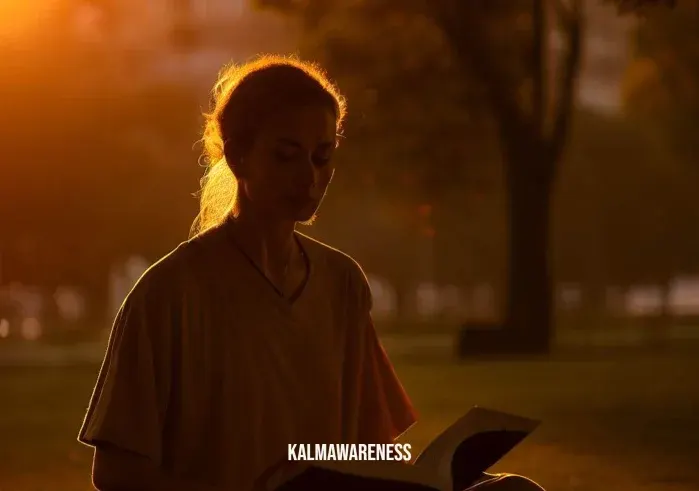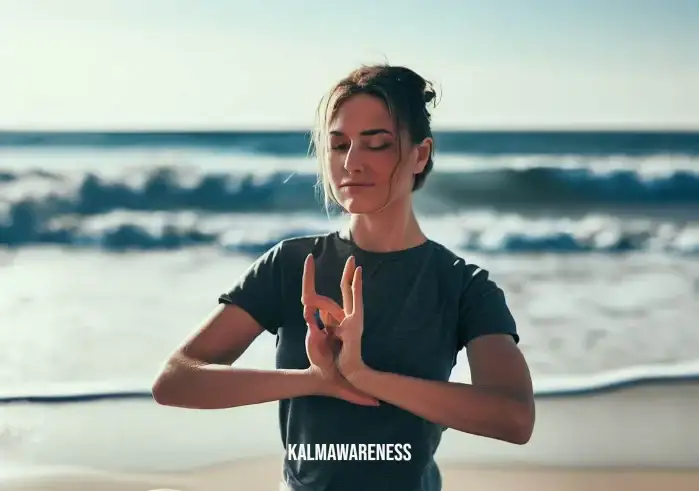Exploring the Energetic Yoga Rabbit Pose
Welcome to the first part of our journey into the world of yoga! In this article, we will be delving into the enchanting and invigorating Yoga Rabbit Pose. Get ready to dive into the world of yoga and unlock the secrets of this wonderful pose.
Yoga Rabbit Pose Details
| Description | Explanation |
|---|---|
| Pose Name | Yoga Rabbit Pose |
| Original Name | Sasangasana |
| Difficulty Level | Intermediate |
| Pose Category | Backbend, Restorative |
| Exercise Duration | Beginners: 30 seconds |
| Advanced: 1 minute |
Duration:
- For beginners, it is recommended to hold the Yoga Rabbit Pose for about 30 seconds.
- Advanced practitioners can aim for a minute to experience its full benefits.
What is Yoga Rabbit Pose?
The Yoga Rabbit Pose, also known as Sasangasana, is a gentle yet powerful backbend that belongs to the restorative category of yoga postures. This heart-opening pose gracefully invites the practitioners to surrender to the present moment, promoting a sense of calmness and tranquility. The name “Rabbit Pose” derives from the posture’s resemblance to a bunny folding into itself, symbolizing nurturing and introspection.
Benefits of Yoga Rabbit Pose
Embracing the Yoga Rabbit Pose in your practice can bring a plethora of benefits to your physical, mental, and energetic well-being.
- Spinal Flexibility: As you gently arch your back in this pose, it helps in improving spinal flexibility and alleviating stiffness.
- Heart Chakra Activation: The heart-opening nature of this asana activates the heart chakra, fostering feelings of compassion, love, and empathy.
- Stress Relief: Sasangasana encourages the release of tension in the upper body, promoting relaxation and stress relief.
- Digestive Health: The gentle compression on the abdomen stimulates the digestive organs, aiding in better digestion.
- Throat Chakra Stimulation: The position of the neck in this pose stimulates the throat chakra, enhancing communication and self-expression.
Step-by-Step Guide to Yoga Rabbit Pose
- Starting Position: Begin by kneeling on your yoga mat with your hips resting on your heels. Ensure that your toes are touching each other.
- Hand Placement: Extend your arms forward, placing them on the mat in front of you. Keep your palms facing down, and let your forehead rest on the mat between your arms.
- Breath Awareness: Take a few deep breaths in this starting position, allowing yourself to settle into the pose and connect with your breath.
- Inhale: As you inhale deeply, lift your hips slightly off your heels and lift your tailbone towards the ceiling.
- Exhale: On your exhalation, begin to slowly walk your fingers towards the top of your mat, allowing your spine to gently arch.
- Crown of the Head: Continue to walk your fingers forward until the crown of your head touches the mat. Your forehead should still be on the mat between your arms.
- Shoulder Relaxation: Keep your shoulders relaxed and away from your ears. Allow your chest to open up, feeling the stretch in your upper back.
- Neck Position: Make sure your neck is comfortable. You can keep your gaze forward or tuck your chin slightly towards your chest.
- Breathing in the Pose: Maintain a steady and deep breath as you stay in this position.
- Hold: For beginners, hold the pose for about 30 seconds. Advanced practitioners can aim for a minute.
- Exiting the Pose: To release, gently walk your fingers back to the starting position, bringing your forehead back to the mat. Sit back on your heels and rest in Child’s Pose for a few breaths.

Yoga Rabbit Pose: Unraveling Its Wonderful Benefits
Welcome back to our exploration of the enchanting Yoga Rabbit Pose! In this chapter, we will delve into the myriad of benefits this pose offers, along with valuable insights into who should avoid it and variations that cater to different levels of experience. Let’s continue our journey into the world of Sasangasana!
Benefits of Yoga Rabbit Pose
The Yoga Rabbit Pose, with its gentle yet profound nature, brings forth numerous advantages for the mind, body, and soul. As you practice this heart-warming asana, you’ll begin to experience a positive transformation within yourself.
- Improved Spinal Health: Yoga Rabbit Pose is an excellent way to enhance the flexibility of your spine. As you arch your back and stretch your upper body, it helps relieve tension and stiffness in the spinal region.
- Stimulation of Abdominal Organs: The compression on your abdomen in this pose massages and stimulates the digestive organs, promoting better digestion and improved gut health.
- Heart and Lung Activation: This heart-opening posture allows for deeper inhalations and exhalations, improving lung capacity and promoting cardiovascular health.
- Relief from Anxiety and Stress: Sasangasana is known for its calming and soothing effects on the mind. Regular practice can help reduce anxiety, stress, and symptoms of mild depression.
- Enhanced Blood Circulation: The posture encourages blood flow to the head, stimulating the brain, and boosting mental clarity and focus.
- Stretching the Neck and Upper Back: The gentle stretch in the neck and upper back helps relieve tension and stiffness caused by long hours of sitting or poor posture.
- Energetic Balance: This pose is believed to stimulate the energy flow through the heart and throat chakras, fostering a sense of emotional balance and self-expression.
- Open Shoulders: As you extend your arms forward, your shoulders open up, relieving tightness and discomfort in the shoulder area.
- Thyroid Stimulation: The neck stretch in this pose helps massage and stimulate the thyroid gland, which is essential for regulating metabolism.
- Posture Correction: Consistent practice of Yoga Rabbit Pose can help improve overall posture and alignment.
Precautions and Contraindications
While Yoga Rabbit Pose offers a plethora of benefits, there are certain situations where caution is advised. If you fall under any of the following categories, it’s best to avoid this pose or practice it under the guidance of a qualified yoga instructor:
- Neck Injuries: Individuals with neck injuries or chronic neck pain should avoid this pose, as it involves bending the neck backward.
- Knee Issues: If you have knee problems, perform this asana with caution. You can place a cushion or folded blanket between your hips and heels for added support.
- High Blood Pressure: Avoid practicing Yoga Rabbit Pose if you have uncontrolled high blood pressure or hypertension.
- Migraine and Headaches: Those experiencing migraines or frequent headaches should skip this pose, as the head-down position may exacerbate the condition.
- Vertigo and Dizziness: If you suffer from vertigo or dizziness, refrain from performing this asana to prevent discomfort and instability.
- Pregnancy: Pregnant women should avoid deep backbends, including Yoga Rabbit Pose, and opt for pregnancy-safe poses instead.
Variations for Different Levels
Yoga Rabbit Pose can be modified to suit practitioners of varying levels of experience. Here are some variations you can explore:
- Supported Rabbit Pose: For beginners or individuals with limited flexibility, using yoga props like blocks or bolsters can provide support in the pose, making it more accessible.
- Extended Rabbit Pose: Advanced practitioners can experiment with extending the arms even further forward, deepening the stretch in the upper back.
- Dynamic Rabbit Pose: For an added challenge, try moving in and out of the pose with your breath, creating a dynamic flow.
- Thigh Stretch Variation: If you’re looking for a deeper stretch in the thighs, incorporate a variation that involves lifting the knees slightly off the mat.

Yoga Rabbit Pose: Unearthing Its Ancient Roots
Welcome back to the final chapter of our exploration of the fascinating Yoga Rabbit Pose! In this segment, we will journey through the history of this pose, explore its spiritual significance, delve into tips for optimizing your practice, and uncover modifications for individuals with injuries or limited flexibility. Additionally, we will discover other poses that beautifully complement the enchanting Yoga Rabbit Pose. Let’s continue our captivating journey into the world of Sasangasana!
The History of Yoga Rabbit Pose
The roots of the Yoga Rabbit Pose trace back to the ancient practice of yoga, where yogis sought to emulate the natural movements and postures of animals. While the exact origin of Sasangasana remains unclear, it has been a cherished posture in traditional Hatha Yoga practices for centuries. Its integration into yoga stems from the reverence and admiration for rabbits, known for their grace, agility, and ability to fold into themselves for protection.
The Spiritual Significance of Yoga Rabbit Pose
Yoga Rabbit Pose holds profound spiritual significance, reaching beyond the physical aspects of the practice. As you gracefully fold into this posture, you embark on a journey of introspection and self-discovery. The symbolism of the rabbit, often associated with fertility and abundance, reminds us of the cyclical nature of life and the importance of embracing transformation and growth.
In spiritual terms, the posture opens the heart and throat chakras, allowing for enhanced communication and expression of emotions. This opening encourages practitioners to tap into their inner truth, fostering a deeper connection with themselves and the world around them.
Tips for Optimal Practice
To reap the full benefits of Yoga Rabbit Pose, consider the following tips to enhance your practice:
- Warm-Up: Engage in gentle warm-up exercises for the spine and neck before attempting the pose.
- Mindful Breathing: Practice deep and mindful breathing throughout the pose to enhance relaxation.
- Stay Relaxed: Keep your facial muscles, neck, and shoulders relaxed to fully experience the heart-opening effects.
- Support for Knees: If you have sensitive knees, place a cushion or folded blanket between your hips and heels.
- Be Patient: Yoga Rabbit Pose may take time to master. Be patient and listen to your body’s needs.
Common Mistakes to Avoid
Avoid the following common mistakes to ensure a safe and effective practice:
- Overarching the Neck: Avoid straining the neck by keeping it in line with the spine, rather than tilting it backward excessively.
- Rounding the Shoulders: Keep your shoulders away from your ears and your chest open.
- Forcing the Pose: Never force your body into the pose. Instead, allow yourself to ease into it gradually.
Modifications for Injuries or Limited Flexibility
For practitioners with injuries or limited flexibility, here are some helpful modifications:
- Gentle Neck Stretch: If you have neck issues, gently tilt your head back without putting pressure on the neck.
- Use Props: Place a cushion or bolster under your chest for added support and a gentler stretch.
- Seated Variation: If kneeling is uncomfortable, sit on a chair and perform the same arm and upper body movements.
Poses that Complement Yoga Rabbit Pose
To create a well-rounded yoga practice, consider incorporating the following complementary poses:
- Child’s Pose (Balasana): A gentle resting pose that complements the backbend of Yoga Rabbit Pose.
- Camel Pose (Ustrasana): Another heart-opening backbend that deepens the chest and stretches the spine.
- Cow Pose (Bitilasana): This gentle chest opener complements the heart-opening aspect of Sasangasana.
Conclusion: Embrace the Wisdom of Yoga Rabbit Pose
As we conclude our journey through the enchanting world of Yoga Rabbit Pose, we hope you’ve gained a deeper understanding of its history, significance, and benefits. Embrace the wisdom of this heart-warming asana, and let it guide you on your path of self-discovery and inner growth.
Remember, yoga is not just about the physical postures; it is a holistic journey that unites the body, mind, and spirit. As you practice Sasangasana and other yoga poses, embrace the beauty of the present moment, and allow the transformative power of yoga to unfold within you.
We invite you to explore more yoga poses, delve deeper into the world of mindfulness and wellness, and continue your journey towards a harmonious and balanced life. Thank you for joining us on this captivating yoga adventure!




